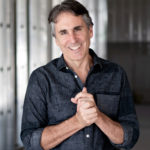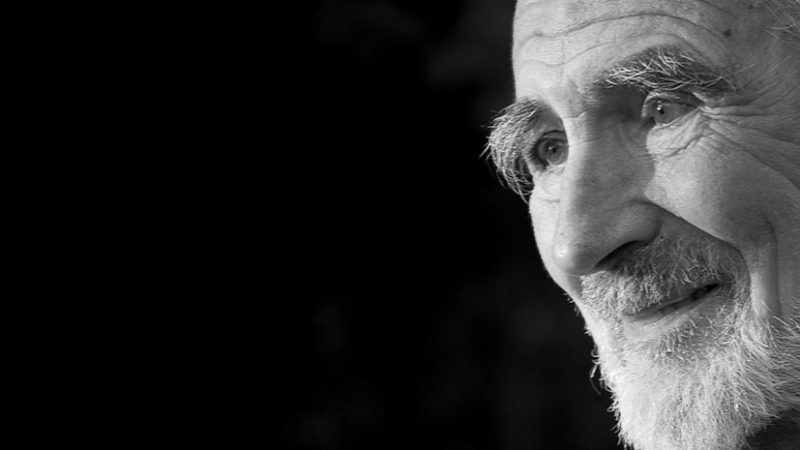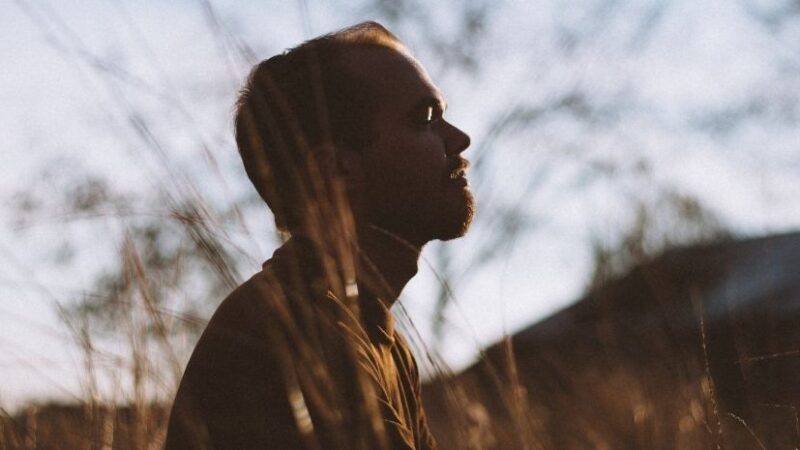-
E117: The Real Work: Letting Go from Within
Michael Singer — October 2, 2025
True spirituality isn’t about mystical experiences or lofty ideals—it’s about honestly facing...
-
Once More: Reflections on Reincarnation and the Gap Between Lives
Tami Simon — September 26, 2025
In this special reflection episode of Insights at the Edge host Tami Simon looks back on her...
-
Honey Tasting Meditation: Build Your Relationship with Sweetness
There is a saying that goes “hurt people hurt people.” I believe this to be true. We have been...
Written by:
Amy Burtaine, Michelle Cassandra Johnson
-
Many Voices, One Journey
The Sounds True Blog
Insights, reflections, and practices from Sounds True teachers, authors, staff, and more. Have a look—to find some inspiration and wisdom for uplifting your day.
Standing Together, and Stepping Up
Written By:
Tami Simon -
The Michael Singer Podcast
Your Highest Intention: Self-Realization
Michael Singer discusses intention—"perhaps the deepest thing we can talk about"—and the path to self-realization.
This Week:
E116: Doing the Best You Can: The Path to Liberation -
Many Voices, One Journey
The Sounds True Blog
Insights, reflections, and practices from Sounds True teachers, authors, staff, and more. Have a look—to find some inspiration and wisdom for uplifting your day.
Take Your Inner Child on Playdates
Written By:
Megan Sherer
600 Podcasts and Counting...
Subscribe to Insights at the Edge to hear all of Tami's interviews (transcripts available, too!), featuring Eckhart Tolle, Caroline Myss, Tara Brach, Jack Kornfield, Adyashanti, and many more.
Most Recent
David Steindl-Rast: Grateful Living in the ‘Double R...
Brother David Steindl-Rast is an internationally renowned author, lecturer, and pivotal member of the monastic renewal movement. A monk in the Benedictine tradition, Brother David is also an expert in Zen Buddhism and a tireless advocate for building bridges between Eastern and Western religious traditions. With Sounds True, Brother David created the audio program The Grateful Heart. In this episode of Insights at the Edge, Tami Simon and Brother David talk about the innate longing that drives spiritual study and is the impetus for seeking out a monastic life. Tami and Brother David explore the concept of the “Double Realm” that lies beyond standard concepts of time and existence, as well as how practicing gratitude can be a doorway to that realm. Finally, Brother David considers the future of religion and spirituality as he enters his nineties.(61 minutes)
3 Ways to Overcome Overwhelm This Holiday Season
The holiday season can be a joyous and fun time for many, and a sad or lonely time for others. But regardless of how this season sits, it is almost always a time of increased stress and overwhelm.
With these simple steps, you can cut down your own stress and find peace of mind.
Get crystal clear on what is MOST important to you
With clarity about your values, you will be able to decide what you are going to say ‘yes’ to and what you are going to say ‘no’ to with greater ease and grace. If you want to feel peaceful? Say no to the four parties on one day. If you want to feel energetic? Put your phone down and go to bed on time. If you want to keep your immune system healthy? Go easy on the sugar and alcohol and make healthy food choices.
Volunteer!
Studies show that volunteering is good for your own stress level—as long as your motivation is for the benefit of others and not yourself. Find an organization you think is doing great work and carve out some time to help.
Set clear boundaries
With the onslaught of parties and events, visitors and responsibilities, it’s easy to get into more than we can reasonably handle. Don’t be afraid to say ‘no.’ My favorite tip for this is to tell people, when they ask me for something, is to say that “I’m not 100% sure if that can work for me; I’ll send you an email by tomorrow end of day to let you know.” That gives you a chance to actually consider whether it is something you really want to do, and also makes it a little easier to let people down gently.
 Dr. Samantha Brody, author of Overcoming Overwhelm, is a naturopathic physician and acupuncturist and founder of Evergreen Natural Health Center in Portland, Oregon. Licensed as a primary care provider with extensive training and experience in both complementary and Western medicine, she has worked with over 30,000 patients and clients in the past twenty years. Her mission is to empower people to address the stress in their lives and help them to make changes that are in alignment with their personal health goals and values. She holds a doctoral degree in naturopathic medicine and a master’s degree in oriental medicine from the National University of Natural Medicine. She is a sought-after international speaker who educates lay and professional audiences on the issues of stress and health. Dr. Samantha writes for a variety of publications and has been quoted extensively in books and media outlets including the Los Angeles Times, Wall Street Journal, HuffPost, and Shape. Learn more at drsamantha.com.
Dr. Samantha Brody, author of Overcoming Overwhelm, is a naturopathic physician and acupuncturist and founder of Evergreen Natural Health Center in Portland, Oregon. Licensed as a primary care provider with extensive training and experience in both complementary and Western medicine, she has worked with over 30,000 patients and clients in the past twenty years. Her mission is to empower people to address the stress in their lives and help them to make changes that are in alignment with their personal health goals and values. She holds a doctoral degree in naturopathic medicine and a master’s degree in oriental medicine from the National University of Natural Medicine. She is a sought-after international speaker who educates lay and professional audiences on the issues of stress and health. Dr. Samantha writes for a variety of publications and has been quoted extensively in books and media outlets including the Los Angeles Times, Wall Street Journal, HuffPost, and Shape. Learn more at drsamantha.com.
The community here at Sounds True wishes you a lovely holiday season! We are happy to collaborate with some of our Sounds True authors to offer you wisdom and practices as we move into this time together; please enjoy this blog series for your holiday season.
To help encourage you and your loved ones to explore new possibilities this holiday season, we’re offering 40% off nearly all of our programs, books, and courses sitewide. May you find the wisdom to light your way.
3 Ways To Be Present This Holiday Season
Holidays are a mixed blessing … they’re times when we take a pause from our daily routines and share more personal time with family and friends—some who we love unconditionally, and those that we love “almost” unconditionally (as long as we don’t talk about politics, the environment, the world, etc.).
Here are a few easy suggestions to help show up in all holiday situations, while maintaining full presence and a sense of calm.
Seek Moments of Stillness
Look ahead to your holiday social events, then plan for intermittent moments to be by yourself for creating stillness, physically and mentally, away from the hustle and bustle of family activities (or the TV). It’s easier than you think, especially if you are truthful about its importance for your health with those around you. If they are curious what it does for you, encourage them to try it too. And after, be curious about their experience as a conversation-starter when you’re together again.
Seek Moments of Silliness
Calm is not easy when our mind is preoccupied and struggling with the chaos often found during the holidays. Luckily the human species is bestowed with the gift of humor and light-heartedness, which research shows is capable of overriding the mind’s obsessive or compulsive tendencies to overwhelm our emotions, and take us out of the present. Engaging in a bit of silliness is literally child’s play and an elixir to bring us back to the present that helps strengthen connection and community.
Breathe Slow and Soft
Awareness of breath is one of the most common techniques for staying present in our “moments” during the holidays. By simply making the sound of our breath soft and the breath’s rhythm slow, we create a more naturally conscious state of being that stimulates our body’s parasympathetic response. This releases the tension and stress our sympathetic nervous system naturally creates during times of anxiety or distress. Remembering this during the upcoming season is truly the best gift you can give!
 Peter Sterios, author of Gravity and Grace, is a popular yoga teacher and trainer with over four decades experience. He’s the founder of LEVITYoGA™ and MANDUKA™, as well as KarmaNICA™, a charitable organization for underprivileged children in rural Nicaragua. Sterios taught yoga at the White House for Michelle Obama’s anti-obesity initiatives for three years, and in 2018 he was invited to the Pentagon to share yoga’s therapeutic effects with the US Marine Corps. He resides in San Luis Obispo, CA. For more, visit LEVITYoGA.com.
Peter Sterios, author of Gravity and Grace, is a popular yoga teacher and trainer with over four decades experience. He’s the founder of LEVITYoGA™ and MANDUKA™, as well as KarmaNICA™, a charitable organization for underprivileged children in rural Nicaragua. Sterios taught yoga at the White House for Michelle Obama’s anti-obesity initiatives for three years, and in 2018 he was invited to the Pentagon to share yoga’s therapeutic effects with the US Marine Corps. He resides in San Luis Obispo, CA. For more, visit LEVITYoGA.com.
The community here at Sounds True wishes you a lovely holiday season! We are happy to collaborate with some of our Sounds True authors to offer you wisdom and practices as we move into this time together; please enjoy this blog series for your holiday season.
To help encourage you and your loved ones to explore new possibilities this holiday season, we’re offering 40% off nearly all of our programs, books, and courses sitewide. May you find the wisdom to light your way.
Customer Favorites
Nataly Kogan: Happier Now
Nataly Kogan is a public speaker, author, and the founder of the training organization Happier. With Sounds True, she has published the book Happier Now: How to Stop Chasing Perfection and Embrace Everyday Moments (Even the Difficult Ones). In this edition of Insights at the Edge, Tami Simon speaks with Nataly about redefining happiness not as a state where we experience no negative feelings whatsoever, but as a skill we must constantly hone. Nataly shares some of her life story, including her childhood experiences as a refugee and why she spent much of her life chasing the unattainable goal of “I’ll be happy when . . .” Tami and Nataly also discuss the benefits of maintaining a regular gratitude practice, then walk listeners through a five-minute “happiness workout” that can be done on the spot. Finally, they talk about how personally fulfilling creative activities can actually make us more productive and help us practice the everyday skills of happiness. (67 minutes)
Ronald Siegel: The Psychophysiological Component in He...
Ronald Siegel is a longtime assistant professor of psychology at Harvard Medical School and the author of many books. With Sounds True, he has created the audio program Healing Through Mindfulness: Effective Practices for Chronic Health Conditions. In this episode of Insights at the Edge, Tami Simon and Ron talk about the psychological contributing factors to chronic pain—especially in the back and spine. Speaking on his own brush with debilitating pain, Ron explains the ways that stress and other psychophysiological components can instigate everything from insomnia to irritable bowel syndrome. Ron and Tami also discuss how to have frank conversations around chronic pain, as well as how to make friends with negative emotions like fear and anxiety. Finally, Ron shares his thoughts on the increasing willingness of the medical community to embrace mindfulness meditation. (70 minutes)
Tami’s Takeaway
In my own experience, I can often trace the relationship between the onset of stress, an increase in muscular tension, and back pain. However, the problem for me has been when other people share about their painful conditions. I often jump to the conclusion that there must be a psychological component to their suffering—and then the person in question feels judged at best, and at worst that I am “blaming them for their illness.” Dr. Ron Siegel teaches how to meet someone in their pain (and by extension, how to meet our own pain) with utter openness and curiosity. The takeaway: pre-drawn conclusions shut exchanges down; genuine openness and curiosity create connection.
The Untethered Soul At Work

I am honored to have this opportunity to share with you a topic that is very dear to me: work. We spend nearly half of our waking hours at work. Because of this, many of us seek a workplace that supports our personal/spiritual aspirations. This generally translates into searching for a job that is “people friendly.” Regardless of where you work, however, there are going to be situations that don’t align with your concepts, views, and preferences. When that happens, some people think it’s time to move on and find an environment that better suits them.
The Untethered Soul at Work presents a real paradigm shift from this way of thinking. Spiritual growth is always about change and transformation, but this does not mean changing the outside—it means changing the inside. A truly spiritual approach to our time at work is to see it as a phenomenal opportunity to go through the changes we need to go through to become more open and accepting. In the end, peace doesn’t mean finding a limited, controlled environment that does not hit our “stuff”—it means using our everyday environment to let go of our stuff so that we can be unconditionally peaceful.
When we approach work as an opportunity to express ourselves as well as to remove the inner blockages that keep us bound, we truly make work a holy place. The Untethered Soul at Work guides us and encourages us to view the challenges in the workplace as opportunities to grow spiritually. Many examples are given of how to face everyday situations so you come out the other side a more liberated person. When at the end of every workday you are a greater person than you were in the morning—you have used your day well. When you have reached the state where you are enthused to come to work every day for the challenge of letting go of your blockages—work becomes a win-win situation. You cannot lose—every experience is for your spiritual transformation.
We cannot always change our environment, but we can change how we interact with it. True mindfulness means staying centered and clear enough to use every moment life presents you to free yourself from yourself. Work is always a spiritual place—if you learn to use it that way.

Michael A. Singer is the author of the #1 New York Times bestseller The Untethered Soul: The Journey Beyond Yourself. In 1971, while pursuing his doctoral work in economics, he experienced a deep inner awakening and went into seclusion to focus on yoga and meditation. In 1975, he founded Temple of the Universe, a yoga and meditation center where people of any religion or set of beliefs can come together to experience inner peace. Through the years, he has made major contributions in the areas of business, the arts, education, healthcare, and environmental protection. For more information about The Untethered Soul®, please visit untetheredsoul.com.

Listen to The Untethered Soul At Work wherever you buy your audiobooks!
Sounds True | Amazon | Audible





